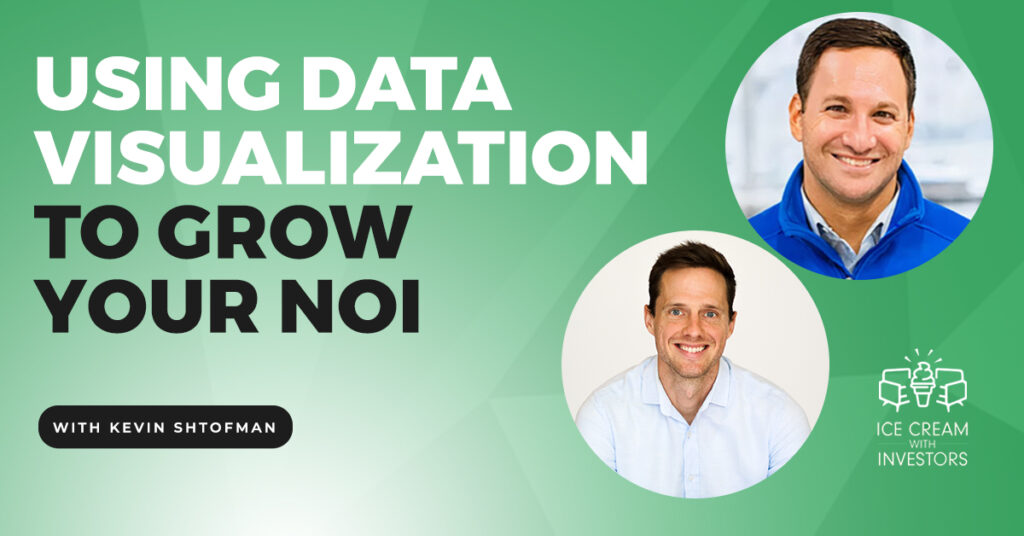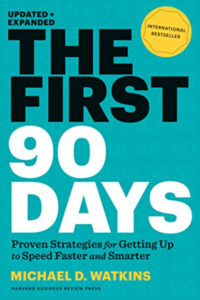Data is not just a bonus nowadays, it’s a crucial factor needed in every decision-making. This applies especially to purchasing property and growing your real estate business. In this episode, we have Kevin Shtofman, global head of innovation for a data analytics platform called Cherre, to tell us how to use data visualization to grow your income! Kevin discusses how data plays a huge role when making decisions in the real estate industry. Kevin also talks about how their company, Cherre, focuses on the real estate information space and has helped clients make more informed decisions with a clean and easy-to-understand layout of important data. They’ll give you all the details you don’t even know you’ll need! Tune in now and know how to make the best out of every deal!
—
Listen to the podcast here:
Using Data Visualization To Grow Your NOI With Kevin Shtofman From Cherre
Kevin, welcome to the show.
Thanks for having me on.
We like to start with the difficult questions here. What’s your favorite ice cream?
People don’t think it’s a difficult question but for me, it’s like picking a favorite child. Ben and Jerry’s is so clever with every name. I love so many of their flavors but the one that’s been most recently on my wife’s mind because she’s pregnant is the Tonight Dough. It’s Jimmy Fallon’s flavor. It’s very chocolate-heavy and has a little bit of caramel in it. I challenge anybody to sit down and be like, “I’m just going to have one bite of this.”
Chocolate and caramel are a tough combination to beat. Are you guys throwing any toppings on there?
No, I’m a purist. The flavor needs to have everything in it. If I need to put a bunch of stuff on it, that’s a problem.
Tell us what’s the scoop. What do you do now?
My role is Global Head of Innovation for a data analytics platform called Cherre. We’ve been around six and a half years now. We have a little over $3 trillion of assets managed on the platform, and we’re a global platform.
I was super excited when I saw the company that you work for because I didn’t know much about the real estate information space and some of the cool stuff you could do about it. It’s been interesting to learn and watch some of the product demos. Before we get into Cherre, take us back to where your real estate journey begins.
Right out of college. That was how we all start. I was a grunt. I think the term is analyst, so that meant a lot of research, a lot of note-taking, and being a fly on the wall in meetings. I got lucky. I went to my bosses and asked how I could climb the ladder. Their advice was either to get a CFA or an MBA. I chose MBA. I just happened to be what it must have been the second week of grad school when Lehman crashed.
While a bunch of people were in the middle of their careers and maybe had deployed a bunch of capital that became at risk, I got to sit on the sidelines and watch it all play out. That likely would scare away a lot of people from that type of career when everything is cratering and chaotic. There’s one thing I learned early in my career, it’s that chaos creates opportunity.
I took a bunch of courses, then did an internship in grad school around the idea of real estate and the next technology. There was no PropTech back then. I graduated from grad school in 2010. From there, I spent nine years across a variety of management consulting firms doing real estate technology projects. Some of that meant selecting the best accounting system for an owner-operator or looking at interesting lease workload tools or CRMs.
The most exciting work was going to a large conglomerate and telling them what tech they need to be deploying. That was the role I fell into when I was at Deloitte. My job was mostly US based but I spent time in about 25 other countries, understanding how mature the ecosystem was and what type of technology companies were ready for. From there, I discovered a startup that was visualizing data and became its COO for about three years.
That was where I discovered this problem that Cherre solves, which is the need to ingest, integrate, audit, and then eventually visualize information for investors mostly. We like to do this for all property types and personas, but it’s about the investors and owners, and how they can make better decisions and make more money.

Data Visualization: There is a need to ingest, integrate, audit, and visualize information so that investors can make better decisions and make more money.
From my point of view, real estate and PropTech in general are still an under-maturated form of the technology industry. Would you typically agree with that? What was it like in 2010?
Different property types and different geographies are a little more mature than others. Residential has always been ahead of commercial as a generality because anytime something is directly consumer-facing, it requires more innovation. As the market changes, people expect that change happens quicker versus when you’re at a large institution. If you don’t have to interface with a bunch of customers, you have the luxury of having longer time horizons before you implement tech.
That being said, let’s say residential number one, retail number two, because they’re interfacing with a bunch of customers, so retail tech have been more early adopters, typically commercial office. Industrial is the last to move forward but that’s changing. I didn’t hear the term PropTech as a recognized industry term until probably 2015-ish. They weren’t just starting out, but companies like VTS and Hightower that were competing in the lease workflow space. The first pipeline tools we’re beginning to launch.
ERP tools we’re starting to go into the cloud. That’s the Yardi, MRI, Oracle, and JD Edwards, which are not getting sunsetted. RealPage grew a bunch. Most real estate companies didn’t have to care until around 2017 to deploy tech because if you had money from 2010 to 2017, interest rates were super low and expectations were even lower.
There were deals to be had. Without deploying a bunch of technology, you could find deals, underwrite the deals, close them, operate them, flip them, sell them, and then use that trap record to raise capital without a lot of deep questions getting asked. Starting in around 2017, you had a proliferation of new technology tools.
New mandates from the pools of capital that everybody wants to secure, which is pension funds and sovereign wealth funds. They started asking more than just what my IRR was. They asked about ESG, housing affordability, waterfall structures, contractors, and things that these companies didn’t have to answer before. All of a sudden, that meant they needed new tools to solve those problems and answer those questions.
You mentioned a term there that I want to make sure we have a standardization on. What does lease flow mean?
That means the marketing, the touring, the securing of a letter of intent, and eventually the closing of a lease in a building. That building can mean a lot of things. That could mean a suite in an office building. It could mean a unit on the bottom floor of a tower, which is housing retail. It could mean all or a portion of an industrial logistics warehouse. It could mean a single-family home, which until very recently was just used to buy. Now, you’re seeing a lot of people getting into renting houses either because they can’t afford the down payment or because they want to build credit into ownership.

Data Visualization: Lease flow means the marketing, the touring, the securing of a letter of intent, and then eventually the closing of a lease in a building.
When you were at EY, you were basically going into some of these commercial and real estate-focused companies teaching them about the technology that they could implement in their business, whether it be ERPs, which are electronic record processing tools, accounting systems, and things like that. Now, that seems to be table stakes. The problem I see in real estate overall is there are so many disaggregated tools. What I mean by that is I have to go to LoopNet for this, then I go to SAP for that, then my accounting system talks to something else. By the way, I need a customer front-facing portal, which is this. Is that still what you’re seeing in the market now?
All the time. I think of information coming from three different buckets. The first bucket is publicly available information that’s spread out and often dated, but available to anybody who wants to scrape it, pull it, and bring it into their ecosystem to make decisions. There are similarly publicly-ish data that is available via subscription. You might have access to some data, but not all of it. By subscription, you can get access to a deeper set of information, and it’s available directly for purchase.
There’s the completely proprietary information internal to an organization that they gather in a variety of tools. That could be internal comps, transactions and journal entries, work orders and capital transactions, capital projects, and ESG-type information and building information. Only when you combine free and paid public data, third-party private data and internal data altogether do you get what I would call an optimal data model that can allow you to make decisions that drive a bunch of enterprise value in your company. That’s whether you’re a company as large as Blackstone, Starwood, Brookfield, or Cherre clients, or you’re an individual investor looking to buy your first duplex and build your own portfolio.
What essentially Cherre does is grab that public information. Those are tax records, last sold, and all that stuff. Non-public information is provided by RealPage, Yardi, and things like that. Also, proprietary information like building audits and lease audits, and you can upload your own leases. Is that correct?
That’s right. The larger and the more complex entity or group of entities you become, the more it makes sense economically to use a platform like Cherre. In today’s world, it’s so hard to compete as an individual investor with institutional capital if you’re starting out and you’re looking to make investments unless you have access to data or very localized knowledge.
If you have grown up in the same neighborhood for 30 years, and you want to buy your first home, and you know specifically, “It should be this side of the street, and a particular finish out in this house. I know that one’s going to sell deep on my gut.” You don’t need tools for that. You can just go with your gut, but as you have to begin managing a variety of different properties, whether it’s townhomes, single-family homes, multifamily complexes, or what have you, that complexity will bog you down. That’s when it makes sense to use an aggregation platform like Cherre.
I saw some of the demos out there and it looked like I can manage my own portfolio. I can look at, “I own this apartment complex, that apartment complex, and this self-storage. Here are some internal metrics around that, etc, so I can produce reports.” It also looked like I could go grab any information that I wanted. If there’s a multi-family across the street that I’m interested in buying, who owns it, when did they buy it, and all that information as well. Is that correct?
That right there is what makes Cherre so unique. There are a bunch of companies out there that purport to integrate and visualize data. Most of them concentrate only on internal systems or on providing one specific data feed. What makes Cherre so unique is combining those together. We have a product called the SFR data kit. It’s how would you leverage single-family residential data to make the best investment decisions? Think about all the information you might need, recorder information, assessor information, title engraved information, unmasked owner information, and property information.
We pull in via partnership with a bunch of other data companies. We bring in very detailed data like a flag to identify whether this transaction was arm’s length, or whether we think this particular home is a flip based on the time of ownership and increase in market value. What’s the square footage of the unfinished portion of the basement? It goes deep. The reason we think the data needs to be that deep is because if you need to make a decision fairly quickly without having to fly out to visit the property and compete with someone local who can be there, you have to make the decision fast.
If you are a real estate investor and want to make a quick decision without having to go to the property and compete with locals, you’re going to need deep levels of data.CLICK TO TWEET
Granted with interest rates and where they’ve gone, I bet deal flow transactions are going to be lower in 2023 than it was in 2022. At the same time, you’ve got to deploy capital and make decisions with it. You need the information to be down to that granular level of detail so you can write your own models and say, “I’m only looking for four-bed, three-bath homes, remodeled within the last six years that are open plan and have some natural light.” It seems simple on its face but the amount of dip data you have to bring in to be able to do that without going and seeing the home yourself is significant.
I’ve seen some stuff like this for single-family and residential. I’ve never seen anything like this for the commercial side. When I was watching one of your demos, that looks like I could pull up the multifamily that I want to acquire across the street or down the road and see what company owns that. Not the people because they probably have it in LLC. I think I saw some tools where you could look and see what else they own in their portfolio and decide, “This might be somebody that I want to go have a deeper relationship with because they also own twenty properties in my area versus just this one.”
The genius firm owner unmasking via LLCs, you won’t always get the accurate percentage of ownership but you’ll get that they’re participating, whether they’re controlled or non-controlled. That’s all that matters. If they’re the controlling partner, they’re making the operational and management decisions, or they’ve farmed them out to a property manager or they’re just passive investors, which means they’re writing checks and relying on the operating partner to deliver the goods.
It’s not only helpful in multifamily. It’s not just who owns that property. What’s the typical bedroom-type makeup? What’s the average credit rating of tenants inside the building? What’s the foot traffic look like around that property? To do that, foot traffic is going to be a safe graph or placer AI or have data. You might have ESG, and carbon footprint information, which is becoming more popular. That’s going to come from the measurable or deep key. There’s no shortage of data sets and information.
Oftentimes, people will come to us saying, “We raised some money. We have a thesis. What are we missing?” It’s not just we’re providing the platform but we’re helping them think about data sets that they might need, and introducing them to those data partners whom we’ve already built relationships with.
We’ve talked enough about how an investor or a real estate operator owner could use the tool. I’ve also heard you talk a little bit about foot traffic for instance, and how non-real estate-focused companies could also leverage your tool to make better decisions. Specifically, I’m thinking of the Starbucks and Domino’s Pizzas of the world. Do you have any clients that aren’t real estate focused and are leveraging the tool now that you could share?
Not that I can talk about publicly. My favorite ones are hedge funds. They won’t let you mention their name at all anywhere. They’re going to their investors saying, “Look at this amazing alpha we’re creating and it’s powered by Cherre.” It’s annoying. It is what it is. Their check is clear. An occupier has very different needs mostly because they don’t often own the underlying real estate. They’re just leasing it from other owners.
What do they need to understand? They need to understand how much they are leasing, where that footprint is, how many people are utilizing that space on a daily or weekly basis, what are the macroeconomic trends during the life of their lease or maybe the five years after their lease that is going to affect the availability of public transportation, or the floor plan within the rest of the building that they’re occupying, or the financial health of the landlord, what changes might happen to their buildings.
With that information, what could Starbucks do? They would have more leverage at the negotiating table when they go to either blend and extend or rethink their lease footprint. They might be able to rethink how much of a real estate footprint they need in a particular submarket or downtown business district. If their employees are more spread out, maybe they’re now thinking about more of a hub and spoke model, and opening satellite offices. Maybe they’re thinking about partnerships like coworking spaces and building out more flex time for people to come to hotels where they need to go.
Occupiers are super interesting. What I have learned though over the last years is it’s not just a real estate play. You need to understand their business. Starbucks is a massive lessee of real estate, but they’re a food and beverage provider. You need to understand what they’re thinking about from a consumer perspective, and what demographics are prolific. You have to know the business. If you’re going to do something for a pharmaceutical company, you have to know how they might treat a manufacturer of the other product, etc.
Do you have services to help them tailor their solution for what their needs are like consulting services?
We try to bring on consulting partners to do a lot of that work because we want to be a SaaS product. We want to be the underlying data infrastructure and visualized and reporting product. There are a bunch of people like me who’ve been in the real estate business for two decades and bring a lot of domain expertise, but we’re not going to be everywhere all at once. We love working with consulting firms that will say, “Here are the questions you’re not thinking about that you need to be asking yourself as a business,” at the very early stages of deployment of our platform.
Some have ongoing advisors, but it’s often most helpful at the early stages. What should you prioritize? A large company might have 25 different sources of information. What are the five that you need to integrate right now versus waiting six months? That answer probably is different now than it was a year ago. A year ago, everyone cared about accelerating transaction volume like deploying that capital and getting the best deals that they can in a low-interest rate environment. They optimally manage the assets they already own so that while there’s an environment of market uncertainty, you can best manage your assets and get the best deal you can on them. When the time gets better, you have a track record to advertise and raise more capital to go deploy it when it’s a more optimal time for acquisition.

Data Visualization: Consulting partners optimally manage the assets they already own so that while there’s an environment of market uncertainty, you can best manage your assets and get the best deal you can on them.
It’s almost like plugging the leaking boat. If you got a stable business right now, the best thing you can do is plug all your holes before you think about how you get the next deal or the next growth, especially as we’re going into these next couple of years here and rising interest rate environments.
It will very much depend on the property type. If you’re a mom-and-pop, single-family home renter, are you attracting a young family who’s going to commit to being in your home for multiple years? You don’t have to worry about having a realtor helping you, having to market the unit, and having a consistent tenant so property management becomes easier.
That’s a very different thought pattern for an office landlord who’s putting in a popular concept and growing and attracting the right consumer base because you might be charging base rent. You might also be getting a percentage of the sales volume. What’s going to be the most popular concepts? It’s very different by property type.
I net out this conversation as you’re taking a very fragmented industry and rolling it all up into one aggregated tool to help you better make decisions, whether investing and deploying capital or operating your buildings on the back end.
At the end of the day, every building in the built world follows the same cycle. We want to find a deal before our competitors do and put a bid in. We want to underwrite the risk and avoid an investment that could blow up our portfolio. Once the bid is accepted, we want to close that transaction as fast as we can because advisory costs affect returns.
Once we own the building, we want to optimally manage and increase profit as much as possible while not making worse the tenant experience. That leads to churn, turnover, and additional costs. We want to sell the property at the right time, and go tell everybody how great we did so we can get more capital and do it all over again. That doesn’t matter whether you’re doing that for an industrial warehouse, a senior living facility, and a lab space for life sciences. It all ends up being a similar workflow.
Kevin, on a personal note, you are also an Ironman triathlete. We almost didn’t get to record because we were nerding out on Ironman so much. I want to pull this thread because my audience knows that I’m a big triathlete as well. What do you think Ironman has taught you about personal and professional success that maybe other avenues wouldn’t have taught you?
The Ironman is the pinnacle of a triathlon, I didn’t start with that as a goal. I had that as my long-term stretch goal. It’s always good to have a goal that seems completely and woefully unattainable at the time you come up with it, and then have goals that get you to that end goal. For me, it was do a sprint, then do an Olympic distance, then do a half Ironman, and then do a full Ironman. It took two years from the time I thought I wanted to do it until I did it.
That building up also helped me understand proper training methods, nutrition, coaching, and the right support network and accountability that you need to get done. Also, if I had tried to go from zero to full Ironman, I probably would’ve burned out. I would’ve done it or I would’ve gone all into the neglect and detriment of everything else in my life.
I did that full distance. I did the half before we were engaged, then I did the full when we were engaged but not yet married. After we got married and got pregnant, I went back to Olympic distance races because training takes a long time but it was building actual muscle. I now have the habit of doing something and being active every single day.
Being active helps so much more than just physical health. It’s mental. It gives me more patience with my little toddlers. My adorable daughter terrorist. It gives me more patience, more energy, and more excitement in my career. It also helps my marriage to be physically active. It was hard for me to be generally physically active with some nebulous belief that I needed to be physically active. I needed something to train for to first build that habit. Now that the habit is built, it’s a little easier to maintain.
You weren’t married when you were training for your full?
Correct.
She still decided to marry you?
This is a great story. I hope she’s okay with me telling this story. She moved to Dallas after law school. My parents were friends with her parents, loosely related. They said, “You should show her around the city.” I was like, “I’ve seen this game before. Okay, sure.” I invited her to this happy hour, where a group of us were training for the race to raise some money for charity. I thought this was the way I was going to impress her. She showed up with one of her friends. There were I think twelve guys and one girl in this group that were training and all sharing beers.
She looked at it and said, “No.” Turned around and walked away, sent me a text message, “I didn’t like what I saw there. It’s not the right place to meet you. When you want to take me out on a real date, let me know.” I was so floored. I was intrigued. Six months later, we were engaged. It helped that I was training when we first met because she knew that was a huge part of my life.
I was able to decrease the amount of time I was training. It was totally digestible versus if I hadn’t been training before then I tried to introduce, at that time, it was fifteen hours a week. That’s a lot of time. It’s a very selfish sport but it’s so rewarding. Anyone that’s tuning in to this episode is thinking, “It’s pretty daunting.” Start by training for a sprint.
If you’re in shape, you don’t even need to train for the race. You could do it on the weekend. There are not a lot of adrenaline moments. The anticipation right before you either jump under the pool for a triple swim or start in the ocean for a race. Nothing builds satisfaction by crossing that finish line. You’re so physically beaten before you do it, and two minutes after you’ve crossed the line after you’ve caught your breath, you’re like, “When’s the next?”
I asked the question because there are always those signs on the race course that it’s like, “If you’re still engaged, married, or have friends, you didn’t train hard enough,” but I completely agree with you. The last 2 to 3 miles of an Ironman race are the most special energetic moments that you will ever have in your life. People would think that that’s when you’re beaten down, and that’s when you have the most energy. It’s fun to go back and look at my times and see not on the halves because the halves are a whole different race for me. On the fulls, you can see the last 2 to 3 miles are usually my best clips in terms of how fast I’m running.
The last two to three miles of an Ironman race are the most special energetic moments that you will ever have in your life. People would think that that’s when you’re beat down and that’s when you have the most energy.CLICK TO TWEET
The most dejected I was in my long-distance race is about a third of the way through the run because I’m not a strong runner. I would have a 72-year-old man jogging past me like, “Keep it up son,” or the twelve-year-old girl prodigy rocketing past me like, “Good job.” That’s demoralizing but once you get through that, you realize that it’s one of the only sports where everyone is in it together with the same goal, and who you’re competing with is yourself.
I’m glad you said that because Ironman is a very special community. There are people who are double amputees or fighting cancer. There are people that have finished races with ALS. There’s a guy out there named Chris Nicki who has Down Syndrome, who’s now making the circuits and making the PR news. My sister had Down Syndrome before she passed, so that was very special in my heart to see that.
Anytime I’m feeling like I’ve lost some motivation, this happened earlier on when I first joined a startup where I was feeling dejected. I thought, “There’s no end to this.” All I got to do is pop on one of those Ironman documentaries. You see the guy with no legs doing the race. You’re like, “Clearly, I’m making mountains out of molehills here and I’m complaining about something I shouldn’t be complaining about. Let’s get back to work.”
I want to take us now to our last round. We’re calling this the Five Toppings. Our first one is, what is your favorite book, or what is a book you’ve read that’s given you a paradigm shift?
This is the part where I have to confess that I don’t feel like I have a lot of time to read physical books and I haven’t read a physical book in probably a decade. The last book series I read was Harry Potter and it was amazing. I loved it. I’m an audiobook guy. I love diving into audiobooks and they’re a few great ones. The Hard Thing About Hard Things by Ben Horowitz, who’s Founder of Andreessen Horowitz. Anything about scaling, so Reid Hoffman and his group Masters of Scale. I’ve read a couple of their audiobooks or listened to them.
The one I most recently started reading is called The First 90 Days. It’s how to add value at a new company and that’s been fascinating. I recommend that to anybody who is about to join a new company or is actively interviewing. It helps you prepare to understand how you should be engaging with a new team in order to add value without kicking the hornet’s nest.
Did you see that Reid Hoffman is going to come out with a new podcast where he’s going to interview ChatGPT? He gave ChatGPT a voice, so he is going to talk about scaling using ChatGPT as his guest.
I’m not surprised but I’m super intrigued.
Go check it out. I heard it on the All-In Podcast, so that might be an interesting one.
ChatGPT has taken over the world from zero to a million users in five days.
Our second one is I believe that the person you become ten years from now is directly correlated to the habits that you have and the things you do every day. What are some of the habits that you have every day?
I’ll talk about family first. When I’m in town, I am always the one that does the morning routine and takes the kids to school. It’s a nice start to the day. It grounds me and keeps me focused on the family because I travel a bunch for work. When I’m gone, my wife has to do it on her own. We have some family here and a support network, but I like being able to have the routine to drop the kids off at school, then my day can start.
Also, as much as possible I try to do some workout classes. A lot of people are internally motivated and they can do a lot of training on their own. You need to be able to do that, especially if you’re into Ironman. I like the social connection aspect of working out. I do a bunch of classes. Also, if I sign up for the class, I have to go or dinged or whatever in the program. I like having that accountability, as well as that social connection and working out.
The last thing, this is not an endorsement. I’m not a sponsor or get compensated but I have gotten into the AG1 Athletic Greens movement. I take it every morning in lieu of breakfast. It’s probably a placebo and some nice-tasting vitamins. It has helped me. That is my morning routine. I don’t need other routines as long as I have my morning routine because then the day can operate like a chess game and it doesn’t matter.
It’s funny you said that about the AG1 because I started doing it as well. I have some digestive issues so I only take half of it. I’m starting to feel a noticeable difference in the morning time. It wakes me up, gives me a little bit of clarity, and I do feel a little bit better from it.
I’ve never gotten into meditation or any of that. I’ve tried it and I didn’t take it. My meditation is taking AG1.
Our third one is, what is the best piece of advice you’ve ever received?
I’ve received so many good pieces of advice. I’ve had great bosses. There’s one that always sticks with me because multiple people have said this to me, “You can go fast alone but you can go far together.” I know it’s cliché but I have very much experienced that being an executive at a company where I grew employee headcount by 5X in two years, and revenue by almost 50X. You get overwhelmed, and sometimes you feel like you have to operate quickly.
Instead of delegating, you dive in and do it yourself. I’ve found that I can get tasks done quickly when I do that, but I haven’t solved the problem. When the same issue comes up again, I have to do it myself because no one else knows how to do it. Being able to partner with others and teach others and learn from them is so powerful if you want to scale a business.
Being able to partner with others, teach others, and learn from them is so powerful as you scale a business.CLICK TO TWEET
I bet there are some interesting systems and processes and questions I could ask off of that but maybe we’ll hang out for a few minutes afterward and I can ask those. Our fourth one is, what is the thing that you’re most proud of in your life?
I know everyone says this and it’s cliché but I’m proud of my family. My wife is a practicing attorney. She’s helping with our two young kids and is pregnant with a third. She does it all with a smile on her face and sees little girls grow up. They can drive you nuts at 4:00 in the morning but nothing beats little games you can play with your kids. It grounds you.
I’ve had moments where I feel like I’m pretty important. I get off stage at a conference and there were 2,000 people, and a hundred of them are waiting in line to talk to me. I feel so inflated or self-important, then I get home and my kids couldn’t care less what I did that day. It’s nice to have that grounding so you can remember what matters most to you.
Our last one is if you could sit down and eat a bowl of ice cream with anyone dead or alive, who would it be and why?
My mind has changed on this answer so many times in the few days since I’ve been prepping for this show, but where I’ve landed officially is Volodymyr Zelensky who is the President of Ukraine. Think about this guy’s career trajectory. He was a standup comedian who became an actor. He landed a role playing the Ukrainian President, then had to become the actual president. When he first got elected, people thought it was going to be a show appearance like the guy who was elected Italy’s premier for a while. I forget his name.
He was a standup comedian, but very quickly the humor went away. He had to become a wartime president. For someone with his background, it would’ve made sense that he might have fled to a safer place and managed the conflict from afar, but he didn’t. He dove in. He was like, “Let’s unite the people now.” I am impressed by that trajectory and I’d love to understand over a bowl of ice cream what he’s thinking about right now. Where is that conflict going to be? Where is their country going to be? Where are his people going to be 24 or 36 months from now?
I’m so glad you touched on the fact that he didn’t flee. The world was watching and the world would’ve given him a lot of slack to run away with this family and go manage the conflict from afar, even if it was within the borders of this country. To stay in Kyiv while the Russians were barreling down the road to Kyiv was the defining moment probably of the 2020s, and we’re rolling to 2023.
I agree with you 100%.
Kevin, this is a fantastic conversation. I’ve loved learning more about you and also about Cherre. I was not familiar with Cherre before we set this interview up. From some of the demos that I saw, it is a super valuable tool. If people wanted to reach out to you or learn more about you or Cherre, where’s the best place we could point them?
LinkedIn is always the best bet because I am active on it. Search my name, Kevin Shtofman. The only thing I ask is that if you send a connection request, you do it under the context of this show because I have no shortage of requests from people that are trying to sell me stuff. I would prefer to engage in interesting real estate topics.
You can also find me on Twitter. It’s @KShtofman. I have a lot less content there but I’ve come around on Twitter. I still think sometimes it’s the bathroom stall of the internet, but there are some interesting communities on Twitter in the world of real estate tech that is a lot more honest on that platform than they might be in other places. If you’re an investor, you can get some valuable intel about the market. If you’re a PropTech company, you can get honest customer feedback without the veil of corporate speak. It’s a great platform and a great tool.
Kevin, thanks for coming to the show.
Thanks for having me.
Important Links
- Cherre
- The Hard Thing About Hard Things
- Masters of Scale
- The First 90 Days
- ChatGPT
- AG1 Athletic Greens
- Kevin Shtofman – LinkedIn
- @KShtofman – Twitter
About Kevin Shtofman

Kevin has spent the last 18 years in commercial real estate, spending time at Morgan Stanley, EY, and Deloitte. Most recently, he was chief operating officer of NavigatorCRE, a data visualization firm focused on commercial real estate.
He currently serves as the global head of innovation for Cherre, the leading international data analytics firms serving the real estate industry.
He, his wife Katie, and their two daughters live in Dallas, Texas, where Kevin is a mediocre golfer and recovering Ironman triathlete.






